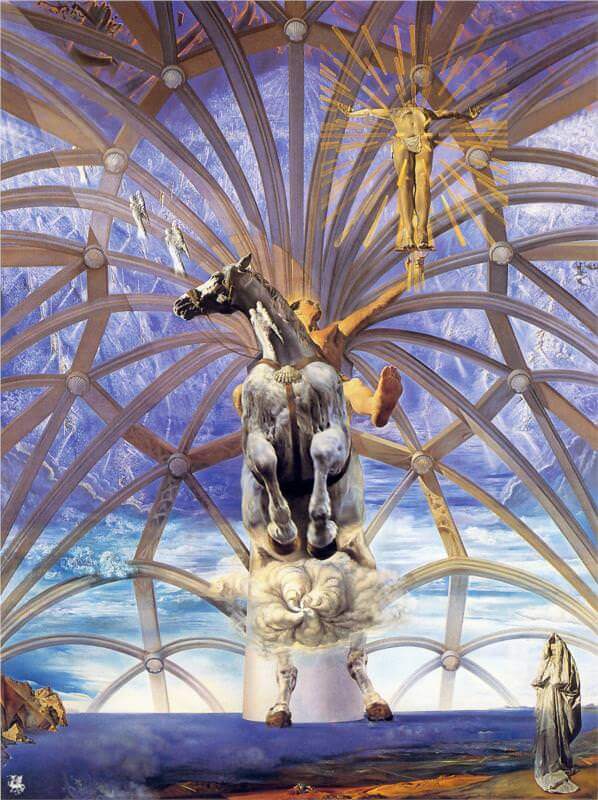Santiago El Grande, 1957 by Salvador Dali

This monumental canvas, measuring in at 13 feet high, is a triumphant rendering of Saint James the Great (Santiago El Grande in Spanish), the patron saint of Spain, rising from the sea astride a white stallion and brandishing an oversized crucifix. An atomic explosion bursting from the four petals of a jasmine flower - a symbol of purity and one of the artist's favorite aromas (a personal reference amidst an iconography that is otherwise rooted in Spanish tradition) - raises the steed toward heaven. There are numerous other elements in the painting which reinforce the narratives of religiosity and nationalism.
Here Dali pays spectacular tribute to the Apostle St. James, the patron saint of Spain. He's shown astride a monumental rearing steed that rises victorious from the sea, dappled in scallop shells, as his - and the entire painting's - upward motion signifies Christ's, and ultimately man's, ascension toward Heaven. The crucified Christ figure is one of the most glorious ever captured on canvas, complete with radiant bands of eternal light emanating from his perfect form - here replacing the sword often seen in statues of the same heroic theme.
St. James himself has been heralded as one of the finest human portraits ever painted by Salvador Dali, while his prominent foot - looking more three-dimensional the longer you contemplate it - is symbolic of the arduous pilgrimages Christ and his disciples made.
Among other marvelous details in this iconic religious masterwork is yet another portrait of Gala, seen in the lower right corner, her face partially shrouded by her monk-like apparel. And in the hind quarters of the stunningly lifelike horse, we see an atomic cloud burst, reflecting Dali's interest in then-new discoveries in nuclear physics and his deepening belief that science and Christianity had more in common than had previously been thought. At the center of the atomic cloud mass is a sweetly painted jasmine flower - a symbol of purity and harmony, and a favorite of Dali, which he'd sometimes place behind his ears or upon the tips of his legendary mustache!























